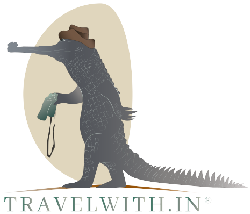The first thing that comes to our mind when someone talks of Kabini, is it’s iconic black panther. Thanks to the latest in (expensive) camera gear, this black panther has become nothing short of a super-star in recent years. A black panther is basically a melanistic leopard or a leopard with more black pigment in it’s fur than the typical rosettes. No doubt this genetic condition is rare in leopards and when you come across such an animal and one that is very comfortable being around our prying eyes (and cameras) it doesn’t take long for it to become a sensation on social media. However, spotting the black panther is not easy at all and is not guaranteed. Like we have said many times before, it’s all a matter of luck and timing and even if you don’t spot the black panther, there is plenty to see and cherish when in Kabini.

Kabini River at Sunrise
Kabini is located on the edge of Nagarhole National Park and acts as a corridor for wildlife movement across Nagarhole, Bandipur, Mudumalai, Wayanad and other forests. It is believed that Kabini is the largest (if not one of the largest) connected forested area left in the country. Kabini get’s it’s name from the river which is a major tributary of the Cauvery / Kaveri river. Before Kabini merges with the Kaveri, the river’s water is harnessed in a huge reservoir. The resulting backwaters attract wildlife from far and wide and is known to have the largest congregation of Asiatic elephants in the summer. It is in the summer when water levels in the backwaters recede giving way to grassy meadows transforming the entire landscape into different shades of bright green.
Historically, Nagarhole National Park in the foothills of the Western Ghats was the hunting grounds for the Maharaja of Mysore and his buddies. Known for the largest concentration of elephants (some with the longest tusks recorded in the continent) and it’s sizeable tiger population, hunting and taming of wild elephants and other wildlife was rampant in the area. It was only in 1972 with the passage of the Indian Wildlife Act that hunting and poaching was banned outright.
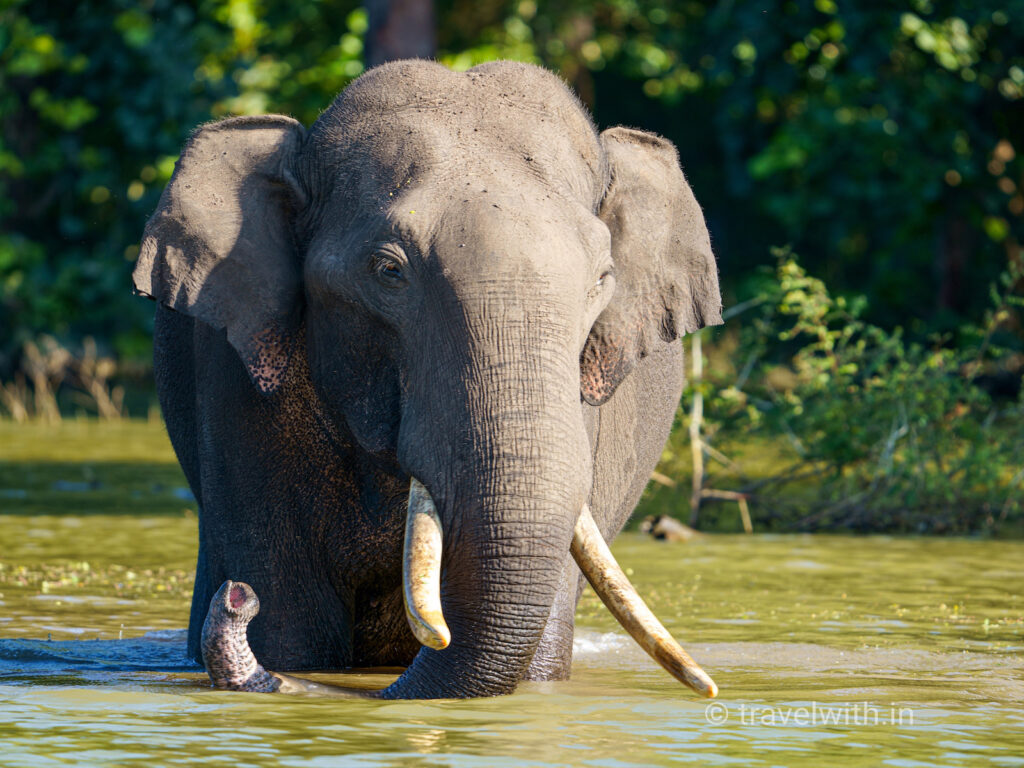
Tusker Elephant in the Kabini River
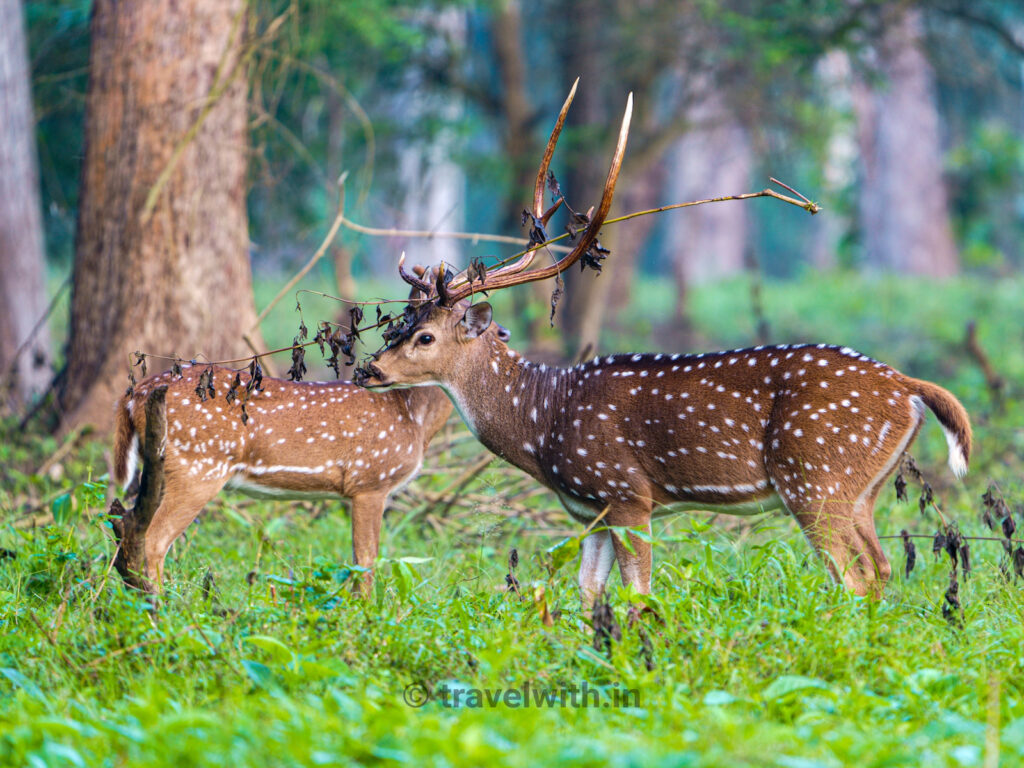
Kabini in Monsoon
Today, Kabini has become an all year round destination famous for it’s pleasant weather and safaris both on land and on water. Yes, that is correct, unlike other national parks, Kabini does not close it’s gates in the monsoon other than on days when there is heavy rainfall making it un-safe to do jeep and boat safaris.
Safaris in Kabini are done in motor boats and on land in jeeps and canters (mini bus). Safari timings are generally 6:15AM-9:15AM and in the afternoon from 3:15PM-6:15PM. If you are planning to spend a few days in Kabini, you must do a boat safari.
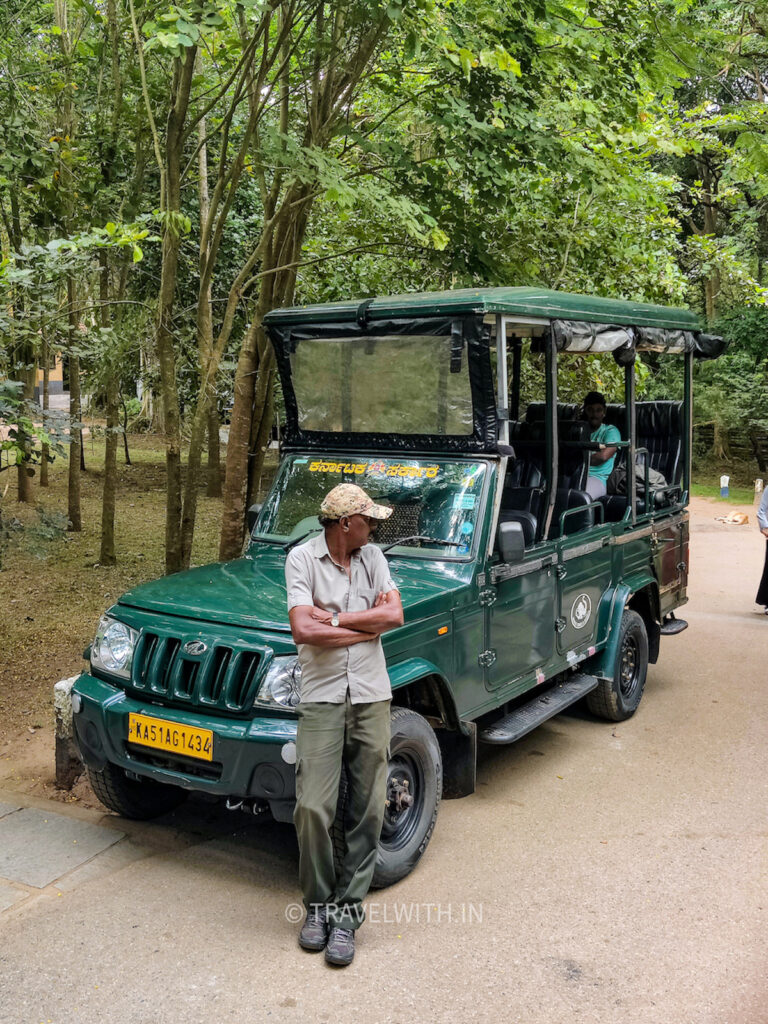
Jeep Safari in Kabini

Stripe-necked Mongoose
In the summer (March – May), wild animals including tigers come to the riverbanks to quench their thirst. If you are a birdwatcher, during the migratory season (October – March) you can see several species of water birds from as far as Europe and Central Asia.
In Kabini, apart from tigers, leopards and elephants, you also get to see Indian Wild Dogs or Dholes and the Indian Bison or the Gaur. Indian Bison is the largest wild cattle in the world and male gaurs and herds are known to take on tigers and other predators without any hesitation. Dholes hunt in packs and are known to have the best hunt to kill success rate. They may look small and fox-like but do not strike them off as timid. They are long distance runners and team players with excellent coordination. They chase relentlessly, eventually tiring their prey to exhaustion only to eat them while it is still alive!

Crested Serpent Eagle
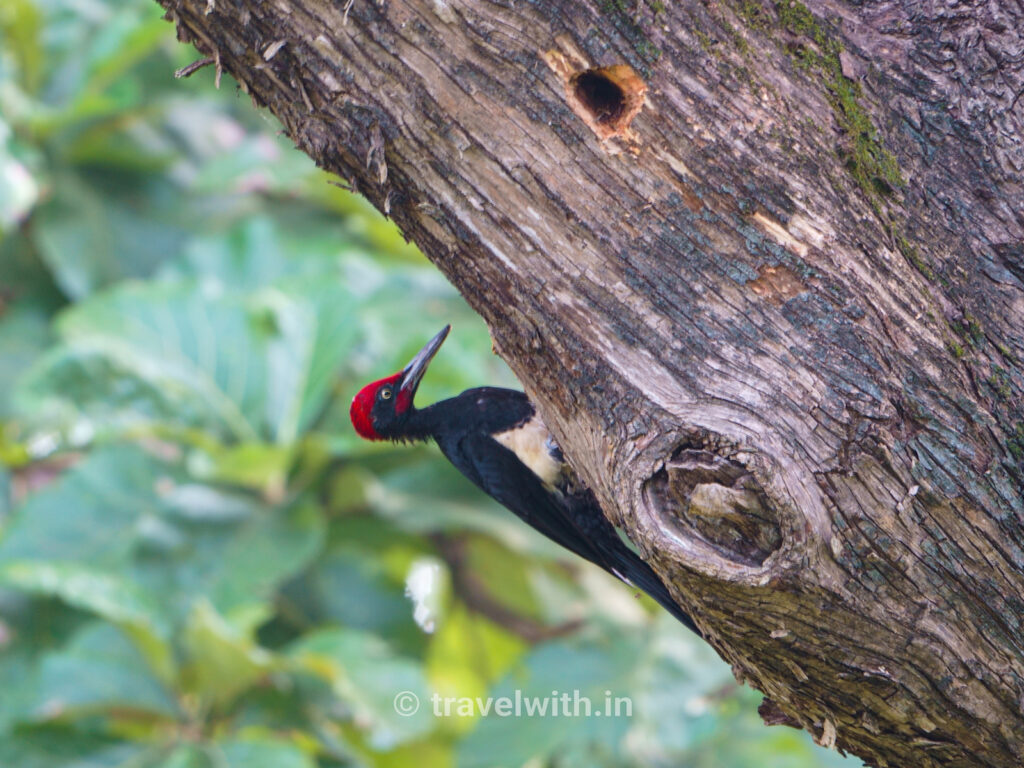
White-bellied Woodpecker
Kabini is a great destination for birdwatching too. Raptors such as crested and changeable hawk eagles are commonly spotted perched with their sight focused on their next meal. Kabini is home to the white-bellied woodpecker. It’s loud cackle is a sure giveaway of it’s presence. This woodpecker species is the second largest in India after the great slaty woodpecker found in the Himalayan foothills.
To get to Kabini, the shortest route is via Mysore airport. From Mysore it’s a two hour drive to Kabini. When you fly in to Mysore you can even stay in Mysore for a night and visit the palace and other heritage monuments. Another option is to fly to Kannur airport which is a four hour drive from Kabini. The most frequently used route is via Bangalore as it has the most flight connections. From Bangalore it takes about 5 hours if you leave early morning before rush hour. Most of the journey up to Mysore is on a newly built four-lane expressway and it is believed that the time will be shortened further when the expressway is fully completed.
Dholes of Kabini

Crested-hawk Eagle
Kabini is an outstanding destination for wildlife and nature enthusiasts. If you have more time, then I recommend a few days in coffee country aka Coorg just a two hour drive from Kabini. Also part of the Nilgiri bio-sphere, Coorg is an incredible part of the country with dense forests complete with a variety of flora and fauna some of which is seen no-where else in India. In Coorg, it’s more about slow travel, hikes, nature and of course lots of freshly brewed local coffee.
